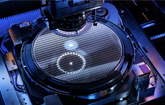Penn Study Shows an Army of Microrobots Can Wipe Out Dental Plaque
PHILADELPHIA, April 29, 2019 /PRNewswire/ -- A visit to the dentist typically involves time-consuming and sometimes unpleasant scraping with mechanical tools to remove plaque from teeth. What if, instead, a dentist could deploy a small army of tiny robots to precisely and non-invasively remove that buildup?
A team from the University of Pennsylvania developed a microscopic robotic cleaning crew to do just that. With two types of robotic systems—one designed to work on surfaces and the other to operate inside confined spaces—the scientists showed that robots with catalytic activity could ably destroy biofilms, sticky amalgamations of bacteria enmeshed in a protective scaffolding. Such robotic biofilm-removal systems could be valuable in a wide range of applications, from keeping water pipes and catheters clean to reducing the risk of tooth decay, endodontic infections, and implant contamination.
The work, published in Science Robotics, was led by Hyun (Michel) Koo of Penn Dental Medicine and Edward Steager of the School of Engineering and Applied Science.
Together, the cross-school team designed and tested two robotic systems, which the group calls catalytic antimicrobial robots (CARs), capable of degrading and removing biofilms. The first involves suspending iron-oxide nanoparticles in a solution, which can then be directed by magnets to remove biofilms on a surface in a plow-like manner. The second platform entails embedding the nanoparticles into gel molds in three-dimensional shapes. These were used to target and destroy biofilms clogging enclosed tubes.
Both types of CARs effectively killed bacteria, broke down the matrix that surrounds them, and removed the debris with high precision. The CARs were able to degrade and remove bacterial biofilms not just from a tooth surface but from one of the most difficult-to-access parts of a tooth, the isthmus, a narrow channel between root canals where biofilms commonly grow.
"Existing treatments for biofilms are ineffective because they are incapable of simultaneously degrading the protective matrix, killing the embedded bacteria, and physically removing the biodegraded products," says Koo. "These robots can do all three at once very effectively, leaving no trace of biofilm whatsoever."
The researchers envision precisely directing these robots to wherever they need to go to remove biofilms, be it the inside of a catheter or a water line or difficult-to-reach tooth surfaces.
The study was supported in part by the National Institute for Dental and Craniofacial Research (grants DE025848 and DE018023) and National Science Foundation.
CONTACT:
Beth Adams
215-573-8224
[email protected]
SOURCE Penn Dental Medicine

Related Links
WANT YOUR COMPANY'S NEWS FEATURED ON PRNEWSWIRE.COM?
Newsrooms &
Influencers
Digital Media
Outlets
Journalists
Opted In





Share this article